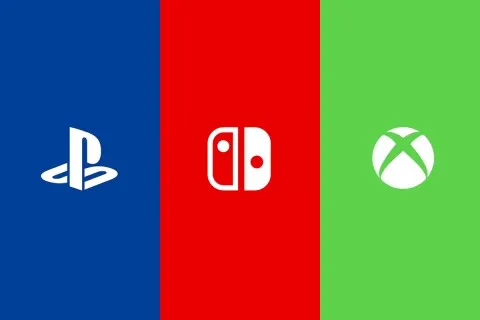10) NetDragon Websoft
$238 million

Editor’s note: This article ranks each publisher by its consolidated GAAP net income over a 12 month period. It should be noted that a company’s “fiscal” year differs depending on its country of operation. In most cases, the date range is April 1st 2016 – March 31st 2017, but in the case of Chinese and Korean companies, it ends at the close of the calendar year.
NetDragon Websoft is a Chinese company that has been developing and operating both massively multiplayer online games and mobile applications since 2002. Many of its most popular games are based on licenses of western IPs, such as Disney Fantasy Online. Although video gaming comprises its most lucrative avenue of business, NetDragon also has a strong presence in the education sector. It is best known for launching the world’s first K12 education tablet, 101 Pad.
2016 was a stellar year for the company, increasing its game-related revenue by 22.8%. Notably, revenue from the mobile game business more than doubled compared to the year before. In addition, NetDragon continued to leverage on the strong titles of its flagship games, Heroes Evolved and Eudemons Online, by launching new expansion packs coupled with marketing events to drive the growth.
NetDragon has found success with mobile spin-offs, noting that “continuous improvement in new gameplay features and monetization schemes” has been at the heart of its revenue growth on the platform. The mobile version of Heroes Evolved was “the top downloaded mobile game” on Tencent Open Platform in January 2017. The Company has planned two new games leveraging the technologies and title of Heroes Evolved to be launched in 2017, which it hopes will further increase user base and revenue.
9) NCsoft
$288 million

NCsoft is a South Korean developer and publisher of massively multiplayer online games. Its most notable game is Lineage, which was a primary driver of revenue in 2016, seeing a 41% jump in sales quarter-over-quarter. Steady sales for its other titles – Aion, Blade and Soul, and Guild Wars – also helped to boost growth by 17% year-over-year for 2016.
However, 2017 has been a mixed bag for NCsoft, so far. Revenue for its most lucrative PC games has tumbled across Q1 and Q2, with the second its weakest quarter in years. NCsoft attributes this to “less promotions and some user attrition from stronger-than-expected Lineage M success.” Lineage M is the publisher’s mobile Lineage spin-off, and it is mobile where its revenue has soared. In fact, Lineage M has driven overall profits up by approximately 8%, an increase both year-over-year and quarter-over-quarter. The results highlight the disparity between development and operating costs of PC games versus mobile, with lower cost mobile games returning higher percentages of profit.
NCSoft is not abandoning traditional gaming, though, as the publisher plans to bring Blade & Soul to consoles in North America.
8) Nintendo
$933 million

Fiscal 2017 was not a good year for Nintendo. The company experienced weak results across several facets of its business, not helped by a barren spell of game publishing in preparation for the launch of its latest console, the Switch. Nintendo’s fiscal year ended March 31st, meaning that just four of the year’s 52 weeks included the unprecedented initial sales of its new hardware. Overall, 2016 was abysmal, with Nintendo reporting a loss for the first time in its history ($49 million).
Nintendo’s losses were attributed to record low sales of the Wii U, which failed to exceed 250,000 units over the first three months of the year. Hardware sales for Wii U dropped by 77%, and only the slight 7% increase in 3DS sales were a notable positive.
Software was a key earner for the publisher, and again it was the 3DS leading the charge. The 14% increase in sales was mainly due to the overwhelmingly critical and commercial reception to Pokemon Sun & Moon. With respect to its mobile segment, despite the phenomenal sales of Pokemon GO, Nintendo’s 32% share wasn’t enough to affect its bottom line.
Amiibo sales also made for grim reading, with just 9.1 million figures and 9.3 million cards for the entire fiscal year. By comparison, in 2016 Nintendo sold 24.70 and 28.90 million units respectively.
Six months on, however, and Nintendo’s financial status is a very different sort of conversation. The incredible performance of the Nintendo Switch, in combination with impressive sales of games such as The Legend of Zelda: Breath of the Wild, ARMS, Mario Kart 8 Deluxe, and Splatoon 2 have steadied the ship. Although competition for parts has starved Nintendo’s ability to produce Switch units, fiscal 2018 is looking very positive, indeed.
7) Activision Blizzard 2017
$966 million

In 2008, shareholders gave the green light for Blizzard’s merger with Vivendi games, thus creating the behemoth that is Activision Blizzard. The combined publishing might of both these companies have created one of the highest earning publishers in the video game industry, and the past 12 months have been especially strong.
Activision Blizzard owns a collection of popular IPs that consistently generate exceptionally high revenue. These include World of Warcraft, Hearthstone, Call of Duty, Destiny, and Overwatch. The latter two, in particular, were responsible for considerable gains in 2016, given that they were both critically acclaimed new releases. Activision Blizzard noted that “Overwatch became Blizzard’s fastest game ever to reach over 25 million players globally and received 55 “Game of the Year” awards.” Call of Duty is also a seemingly evergreen success, ending the year as the number one console franchise globally, and was the number one best-selling game in North America for the eighth year in a row.
World of Warcraft and the digital card spin-off, Hearthstone, also saw growth, with monthly active players increasing by 20% for both titles.
Beyond traditional console and PC gaming IPs, the mobile market is an important business avenue for Activision Blizzard. The acquisition of mobile developer King in 2015 has been a particular boon, with the Candy Crush Saga continuing to chart among the top 10 most downloaded games in the U.S mobile app store.
6) Electronic Arts
$967 million

In its annual report, Electronic Arts’ CEO Andrew Wilson described fiscal 2017 as a “milestone year” for the publisher, and it certainly recorded some impressive figures. EA generated record net sales and operating cash flow, with a proportionately higher amount of digital sales than usual, as well as increasing profit from live services. Although the publisher’s net income was slightly down in comparison to the previous year, EA noted that 2016’s earnings per share included “an income tax credit due to the reversal of the valuation allowance EA had against its U.S. deferred tax assets.”
EA touted “player engagement” as a driving force behind its record twelve month period. As always, FIFA was a huge contributor to the publisher’s revenue, earnings its place as the number one most bought game in the world for fiscal 2017. In numbers, that equated to 21 million individual users playing the game in some capacity, over half of which took part in FIFA’s new story mode, The Journey.
Numbers were similarly impressive for its other major release, Battlefield 1, that was played by more than 19 million players — a 50% increase over Battlefield 4 in the comparable period. EA also detailed other engagement figures, such as the Q4 average gameplay time per player in Star Wars: Galaxy of Heroes, which reached 162 minutes per day, and monthly active users in Q4 for The Sims 4 increasing 33% year-over-year.
5) Time Warner
$1.7 billion

Media giant Time Warner began its involvement in the video game industry back in 1995, licensing its Batman IP under the guise of “Warner Bros. Interactive.” Since then, it has thrived as a video game publisher, and the industry now represents a significant avenue of its business. That being said, 2016 was a middling year for the company, with revenue largely flat in comparison with the previous year.
Despite Time Warner’s operating income growing 22 per cent to reach £1.7bn overall, the company was affected by lower video game revenue, In its financial report to stockholders, Warner Bros. stated: “Videogames revenues declined as the prior year benefited from the releases of Mortal Kombat X and Batman: Arkham Knight.”
It was expected that 2017 would see an increase in revenue from video games, with Lego Marvel Avengers, Lego Star Wars: The Force Awakens, Batman: Arkham VR and Batman: Return to Arkham forming an impressive schedule. And, indeed, Warner Bros. Interactive showed strong growth. Time Warner said that Injustice 2 was the “highest-grossing console game in the second quarter of 2017.” The performance of Injustice 2, and the movie Wonder Woman (Warner Bros. Interactive includes film production) accounted for nearly $3 billion in revenue in Q2 alone.
4) NetEase Games
$1.7 billion

Gaming in China is on the rise, and NetEase is at the center of game distribution across the country. The publisher has produced some of China’s most renowned and longest running online PC-client games, including Fantasy Westward Journey II and New Westward Journey Online II, as well as successful mobile variants of these titles. NetEase’s other major business venture is its partnership with Blizzard. The publisher operates the most popular online games in the country, including World of Warcraft, Hearthstone, StarCraft II, and Diablo III. In 2016, the combination of PC gaming, mobile gaming, and operating Blizzard’s online networks in China contributed 67.6% of its total revenue.
In 2016, NetEase’s strategy focused on nurturing its current stable of mobile titles, introducing expansion packs for titles such as Fantasy Westward Journey Online, New Westward Journey Online II, New Westward Journey Online III, Heroes of Tang Dynasty Zero, Revelation, and New Ghost.
For 2017, NetEase is off to an excellent start. For the three months ended June 30th, revenues for NetEase games were reported as $1.4 billion, up 46.5% when compared to the same period last year. In a conference call with investors, CFO Charles Yang noted that mobile games “remain our primary growth engine accounting for 72.4% of our online games services net revenue in the second quarter.”
NetEase forecasts the rest of the year to yield similarly impressive results, particularly because it plans to bring Minecraft to China. Beta testing has already begun.
3) Sony Corporation
$2.6 billion

Sony’s overall company performance was less than impressive last year, but PlayStation itself performed superbly. Never before has the video game industry been so important to Sony’s bottomline, with strong software and hardware sales contributing a disproportionately high amount to its overall earnings. Sony reported overall revenue at $67 billion, with the gaming division responsible for over $14 billion of that total. And more importantly, gaming related profit rose by $1.1 billion over last year.
Impressive sales of its PS4 console are at the heart of Sony’s record haul in fiscal 2017. The console is steamrolling its competition with 20 million sold last year, pushing lifetime sales beyond 60 million units. By comparison, Sony sold 17 million units in 2015.
Software sales were also cited as a primary factor for the record year. Although Sony did not highlight individual software numbers, the exceptional performance of titles such as Uncharted 4 was surely a factor. A late flurry of games toward the end of fiscal 2017 – Nioh, NieR, and Horizon Zero Dawn – helped Sony to a achieve a record Q4. The publisher also made special mention of strong digital and network sales, forecasting them to be an increasingly influential contributor moving forward to fiscal 2018.
2) Tencent Holdings
$5.9 billion

If you needed any convincing that the mobile game market is fast becoming the most lucrative sector of the gaming industry, Tencent provides a case study. In 2017, the Chinese holdings company recorded its biggest annual jump in revenue for four years. Beyond the incredible popularity of its messenger service, WeChat — which Tencent said has now reached 889 million monthly users worldwide — the publisher is enjoying sensational success in gaming.
Tencent has its roots in PC gaming, finding huge success in the Asian market, publishing titles such as Crossfire and Call of Duty Online, and now it is making waves in mobile. In fact, Tencent recently announced that for the first time, mobile gaming topped PC gaming last quarter.
The company’s most notable acquisition is its majority share in billion dollar game maker Supercell (Clash of Clans, Boom Beach), but it also makes its own games and partners with publishers to distribute titles in China and the rest of the world. App Annie recently ranked it as the top mobile publisher of 2016 based on revenue (Supercell placed second).
Comparing year-on-year records highlights striking revenue gains. In Q4 of last year, Tencent said smartphone games pulled in $1.55 billion in revenue; in Q2 of this year, Tencent reports $2.2 billion revenue from mobile games alone. The mobile market has helped the firm’s profit rise by 70% versus the same period last year.
PC gaming still plays an important role, too. Tencent stated that Honor of Kings reached 50 million daily users last year to become its most popular game to date. The PC division contributed $2 billion of revenue last quarter, and the online games business grossed $3.6 billion, showing Tencent still has a major presence beyond mobile.
1) Microsoft Corporate
$21 billion

Microsoft’s astronomical $21 billion net income catapults it to the top of this list, though the majority percentage obviously does not come from its gaming division alone. The company is a huge multifaceted business, leveraging its foothold in the PC software market to generate its most notable profits. Windows 10 and Microsoft Office packages account for a considerable proportion, as does Azure, Microsoft’s commercial cloud service, which exceeded $18 billion in revenue alone in 2017.
However, gaming still represents an important avenue of business, too. Despite the fact that Microsoft neglects to stipulate exact figures on the Xbox Division’s performance, we know that gaming generated over $3 billion of revenue in a single quarter earlier this year. In its letter to shareholders, Microsoft makes special mention of gaming revenue increasing by $44 million dollars, which it attributes to higher spending on Xbox software and services. Xbox Live’s user base continues to grow, too, with a 13% increase over last year. On a less positive note, though, the publisher also admits a decline in the volume of consoles sold, explaining the 29% decrease in revenue (and lower console prices) in comparison to 2016.
Looking forward, Microsoft’s gaming division should be course for a stronger fiscal 2018 as it plans to launch its Xbox One X console.





Published: Aug 18, 2017 09:01 am